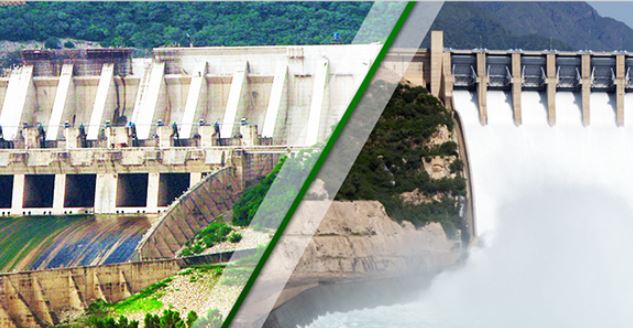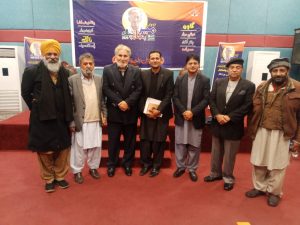ISLAMABAD – Pakistan has decided to do away with an outdated river flow monitoring system.
Earlier, a manual system was in place to record river flows, storage and surface water availability, but now a software-operated system has been put in place to eliminate water-related disputes among the provinces.
The development comes days after a meeting of Irsa at its headquarters in the country’s federal capital discussed the progress and uptake of the Water Accord Apportionment (WAA) tool.
The modern system, Water Apportionment Accord (WAA) tool, has been developed by the Australian government. The Ministry of Water Resources, IRSA, WAPDA and Provincial Irrigation Departments played a crucial role to keep a record of the water share of the provinces.
According to this development, the WAA tool has been handed over to all provinces and the federal government as it will help to forecast flows in the rivers; system losses and gains, and water availability for the crops.
The Indus River System Authority spokesperson Khakid Idress Rana told Daily Pakistan that no manual recording of flows, storage and withdrawals will take place from now onwards, saying all stakeholders reached a consensus to shift to the new tool.
The new system aimed at improving mid-seasonal planning. Officials said allocations of provincial waters shares for Rabi 2022-23 would be solely designed and based on this tool.
Water Accord Apportionment (WAA) tool also garnered praise as the South Asian country will face an acute water crisis while officials called for water management measures.
A politically unbiased and holistic water policy is needed of the hour as water shortage will increase manifold by 2025, and will further affect food shortage.
The water crisis could also result in confrontation between the provinces as river sharing has always been a source of problems in the country.
Lately, the Institute of Urbanism, International Water Management Institute (IWMI), Pakistan Council for Research on Water Resources (PCRWR) and Heinrich-Böll-Stiftung (HBS) organised a media fellowship on Harvesting Rainwater for Urban Flood Management.
This fellowship is comprised of field visits to various rainwater harvesting sites in the federal capital and Lahore.
The program is intended for groundwater recharge solutions which are the need of the entire country.
#HappeningNow#IoU in collaboration with @BoellStiftung and @IWMI_ brought #Eco_Journalists to explore innovative solutions around flood management. The Eco-Journalists are interacting with experts from #PCRWR and #IWMI. pic.twitter.com/HakwpilWhr
— Institute of Urbanism (@int_urb) September 13, 2022
PCRWR Chairman Dr Muhammad Ashraf said Pakistan was facing environmental degradation as in one season it had dryness and in other there were floods. “We have to increase water storage at every stage. We have to develop large, medium and small dams as per requirement.”
The rainwater storage solutions like artificial lakes at housing societies or artificial recharge wells would help manage rainwater, he added.
“Sixty percent of agriculture use water is coming from groundwater resources. We will have to either reduce groundwater extraction or increase water table recharge,” he further said.
Flash floods, he continued, was not mitigatable in the federal capital or other mega urban even in pre-encroachment scenario of nullahs. “Watershed management is imperative for flood and drought management whereas catchment area needed to be enhanced.”
The artificial recharge well’s purpose was to intercept rainwater near the catchment area and inject it into the groundwater well. “It will help save water from evaporation, ponding and pollution,” Dr Ashraf explained.
He then informed the Capital Development Authority (CDA) was establishing 100 recharge wells and 20 monitoring stations from its own resources in the federal capital.
In his welcome remarks, Country Representative Pakistan and Central Asia IWMI, Dr Mohsin Hafeez, said the IPCC Report highlighted heatwave rise, heavy precipitation in South Asia Region due to human-induced activities and both the natural phenomenon that occurred this year.
He said the worst flood occurred combining riverine and hill torrents flood.
According to Dr Mohsin, ill-planned housing societies, construction on river beds and encroachments on water flows were causing mega-disasters. “Climate Change has a major impact on water and there are nine of months drought and three months of rain but we have insufficient infrastructure as no dams have been constructed in the past 50 years,” he added.
He mentioned that the water recharge level in the capital was 130-150 millimetres (mm) in 1990 which remained the same in 2021 but the rate of urbanisation boom spiralled rapidly.
“4.8 mm water tabled improved at Kachnar Park artificial recharge well. We are implementing it on 100 sites in the capital in collaboration with CDA and PCRWR.”
So far, 1.90 million gallons of water have been recharged into the aquifer against rainfall of 589 mm during the period May – September 2022. “Moreover, a rise in the water table of 4.8 meters (39.5 to 34.7) has been recorded,” Dr Mohin explained.
Deputy Director General Sardar Khan Zimri said the recharge wells were proposed in building bye-laws to recharge groundwater by adopting the solution in households.
He informed there were 62 recharge wells installed in the federal capital and out of which 8 to 10 failed due to more groundwater levels at the sites whereas 50 of them were operational.
The media persons also visited the sites of recharge wells installed at PCRWR and Kachnar Park.
The IWMI Country Director told the media that I-8 Kachnar Park recharges well possessed the most modern technology which was implemented after hydrological modelling of Islamabad in which seven potential sites for groundwater recharge were identified.
A PCRWR official briefed the journalists that Kachnar Park recharge well as the only site fully instrumented where a water gauge was installed along with automatic data drivers that monitor water inflow and temperature shift.
He informed that from May to September 78mm of rainfall was recorded in the capital and 1.9 million gallons of rainwater was conserved on this site.
During the second day’s visit, the media delegation visited various rainwater harvesting sites in Lahore that were the first of its kind facilities to store rainwater causing flooding on the thoroughfares of Lahore that were later used for watering greenbelt plantations across the city.
The first site was at Bagh-e-Jinnah along Lawrence Road where a 1.4 million gallons capacity underground water storage capacity was established at a cost of Rs140 million. The site comprised a catchment area of 30 acres and a ponding area of three acres.
The Water and Sanitation Agency (WASA) Lahore developed under the vision that helped end the stagnation of water in this area during 100mm rainfall.
The water tank had two water pumps of six cusecs to pump water to the other site in case of above 100mm rainfall and storage capacity reaching its full volume.
There were also two more underground water tanks underway at Sheranwala Gate and Alhamra Arts Council whereas the latter was near completion.
The underground water tanks had huge social benefits including flood-free routes and connectivity during heavy rains and mitigated the risk of urban flooding whereas it gave an additional source of water to increase green cover in the city.













